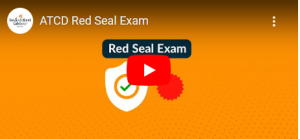Powerline technicians construct, operate, maintain and repair overhead, underground and underwater electrical transmission and distribution systems. They install, maintain and repair overhead, underground and underwater powerlines and cables, insulators, conductors, lightning arrestors, switches, metering systems, transformers and lighting systems. They erect and maintain steel, wood, fibreglass, laminate and concrete poles. They splice and terminate conductors and wiring to connect power distribution and transmission networks, and install and transfer communication devices. They are employed by electric power generation, transmission or distribution companies, powerline contractors and public utility commissions, and can specialize in transmission lines, overhead or underground distribution systems, communication networks or electrical power stations. They may also be employed in the mining, construction or oilfield sector. They require communication skills, and strong analytical skills in order to read and interpret diagrams, drawings and specifications. They need to plan their work; including making considerations to prevent damage during construction to wildlife habitats. They must have good mechanical aptitude to install, troubleshoot and repair equipment, good vision, and the ability to distinguish colours.
Powerline technicians work outdoors, at any hour and in any weather. The work involves travel to the worksite, often in remote areas, and the use of equipment such as all-terrain vehicles, snowmobiles, aircrafts and watercrafts. Occupational hazards are working with high voltage equipment, in confined spaces, at heights, and in extreme weather and environmental conditions. This also could include exposure to asbestos, silica dust, mercury, lead and PCBs. The work requires heavy lifting, working in awkward positions, and carrying and reaching. Getting to powerlines requires climbing poles and structures, working from aerial work platforms and entering maintenance holes and underground vaults. This standard overlaps with the work of construction electricians and industrial electricians. Powerline technicians work with a wide variety of tradespersons, engineers and inspectors. They may advance to senior journeyperson, foreperson, supervisory or managerial positions, and may transfer their skills to occupations in areas such as design, planning, safety, technical support services and system control.
(https://www.red-seal.ca/_conf/assets/custom/docms/plt_tp2019_eng.pdf)
| APPRENTICESHIP TERM: 4 years, 7200 hours (Plan of Training – 2022) | |||
| Level 1 | Level 2 | Level 3 | Level 4 |
| Pre-Employment (35 wks) | 7 weeks | 7 weeks | 8 weeks |
| 5 weeks** | 7 weeks | 7 weeks | 8 weeks |
| **Refer to the Pathways to Certification diagram. | |||
Trade Resources
Red Seal Occupational Standard (RSOS)
Pre-Employment – Plan of Training (POT) – 2022
Atlantic Apprenticeship Curriculum Standard (AACS) – Plan of Training – 2022
Red Seal Exam Resources
PREPARING FOR A RED SEAL EXAM (video)

Red Seal Exam Breakdown
Exam Weighting Chart – Powerline Technician
Red Seal Exam Self-Assessment – Powerline Technician
Task Matrix – Powerline Technician
Study Guide – Powerline Technician
Study Strategies and Exam Prep Guide
Red Seal Examination Prep Guide
Red Seal Exam Practice Questions – Powerline Technician
Trade Acronyms – Powerline Technician
